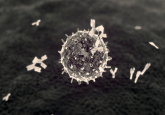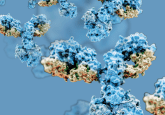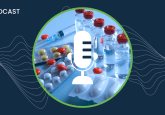Chromatographic method development, top tips and future hopes: an interview with Cory Muraco
As part of our Spotlight, we present this interview with Cory Muraco (Merck KGaA, Darmstadt, Germany) who discusses his interest in chromatography, the technologies he uses and his top three tips for chromatographic method development.
1Could you introduce yourself and explain what began your interest in chromatography?
- I have been interested in science since I was a kid
- My interest in separation sciences began in undergraduate organic chemistry
- My graduate work on analyzing and characterizing oxidized proteins further deepened my appreciation of separation sciences
- I completed my graduate studies in 2013
- Since 2015, I have been a member of Liquid Separations R&D at Merck KGaA, Darmstadt, Germany (NJ, USA)
2Describe the technologies that you use? What are the advantages and disadvantages of such techniques?
Diode array detectors (DAD) and mass spectrometers (MS) are common detectors used to analyze biotherapeutics.
- DADs: easier to operate, proteins and peptides absorb strongly at 215 and 280nm, cannot see low concentration analytes.
- MS: can detect very low concentrations of impurities and variants, does not rely on analyte structure for detection, steep learning curve for new users.
Superficially porous particle (SPP) packed columns can provide enhanced efficiencies and resolution of variants than conventional fully porous particle (FPP) packed columns.
3What are the challenges you face with chromatographic method development?
SPP-packed columns help solve two key challenges in chromatography: obtaining more symmetrical peaks and better sensitivity of low concentration species in the sample.
4How does the services portfolio of Merck KGaA, Darmstadt, Germany, help with these challenges?
Our portfolio has many products that aid the practicing chromatographer. A subset of these products include:
- BIOshell SPP-Packed Columns
- Discovery BIO FPP-Packed Columns
- Chromolith Wide Pore (WP) Monolithic Columns
- Millex Syringe Filters
5What are your top three tips for chromatographic method development?
Three tips for any chromatographer to employ to improve his/her chromatographic results include:
- Filter samples and mobile phase buffers
- Use isopropanol or butanol to minimize secondary interactions between silanols and protein analytes
- Use difluoroacetic acid (DFA) as an ion-pairing reagent instead of trifluoroacetic acid (TFA)
6Where do you hope this field will be in 5–10 years’ time?
The future of chromatography should move into two areas:
- Micro-format (i.e. handheld instruments)
- Hospital/clinical setting as a diagnostic tool for health practitioners






